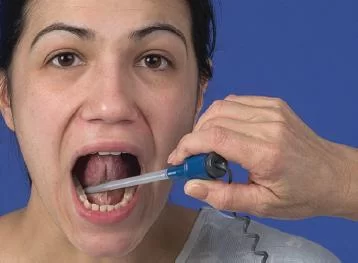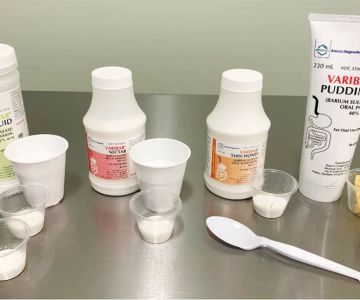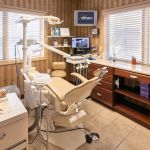
Why Use an Oral Thermometer to Check Your Temperature?
Monitoring your body temperature is an essential step in identifying illnesses such as fever, infections, or other medical conditions. An oral thermometer is a widely used, convenient, and accurate tool for measuring body temperature. Unlike other types, oral thermometers provide a quick and reliable reading when used correctly. In the United States, oral thermometers are popular for home use due to their ease and availability.
Knowing how to use an oral thermometer properly ensures you get an accurate temperature reading, which is crucial for making informed health decisions and knowing when to seek medical attention.
1. Preparing to Use an Oral Thermometer
1.1 Selecting the Right Thermometer
There are various types of oral thermometers, including digital and glass mercury models. Digital thermometers are recommended for safety and ease of use. Before starting, ensure the thermometer is clean and has fresh batteries if required.
1.2 Avoiding Factors That Affect Accuracy
Certain activities can influence your oral temperature reading. It is best to wait at least 15 minutes after eating, drinking hot or cold beverages, smoking, or exercising before taking your temperature orally. This waiting period helps stabilize your mouth temperature for a more accurate result.
2. Step-by-Step Guide to Checking Temperature with an Oral Thermometer
2.1 Clean the Thermometer
Before use, clean the thermometer tip with rubbing alcohol or warm soapy water, then rinse with cool water and dry with a clean cloth or tissue to prevent contamination.
2.2 Position the Thermometer Correctly
Place the thermometer tip under your tongue toward the back of the mouth, slightly off-center. Close your lips gently around the thermometer to hold it in place. Avoid biting down or moving the thermometer during measurement.
2.3 Wait for the Reading
Digital thermometers typically beep when the reading is complete, usually within 30 seconds to one minute. If using a mercury thermometer, keep it in place for about 3 minutes before reading the temperature.
2.4 Read and Record the Temperature
Once the thermometer signals completion, remove it carefully and read the displayed temperature. Record the number for future reference, especially if monitoring a fever over time.
3. Understanding Temperature Readings and What They Mean
3.1 Normal Oral Temperature Range
The average normal oral temperature ranges from 97.6°F to 99.6°F (36.4°C to 37.6°C). Variations occur depending on the time of day, age, and individual differences.
3.2 Fever Indicators
A temperature above 100.4°F (38°C) usually indicates a fever, signaling the body's response to infection or illness. Persistent or high fevers warrant medical attention.
3.3 When to Contact a Healthcare Provider
If your oral temperature reading remains elevated or is accompanied by other symptoms like difficulty breathing, severe headache, or persistent vomiting, seek prompt medical evaluation.
4. Tips and Precautions for Accurate Oral Temperature Measurement
4.1 Ensure Proper Hygiene
Always clean the thermometer before and after use to avoid spreading germs. Never share oral thermometers without disinfecting.
4.2 Use Consistent Measurement Practices
Take your temperature at the same spot under your tongue each time to maintain consistency in readings.
4.3 Avoid Oral Interference
Refrain from talking, breathing through your mouth, or moving while the thermometer is in place to prevent inaccurate results.
5. Real-Life Scenario: Sarah’s Experience Using an Oral Thermometer
Sarah, a mother of two, once faced uncertainty when her young child felt warm. By carefully following oral thermometer instructions, she was able to quickly detect a mild fever and decide to monitor symptoms closely. This timely temperature check helped her avoid an unnecessary emergency room visit and provided peace of mind.
Sarah’s experience highlights how mastering the correct oral thermometer use can make a meaningful difference in health management at home.
6. Alternative Methods and When to Use Them
While oral thermometers are effective, other options such as tympanic (ear) thermometers or temporal artery (forehead) scanners may be preferred in certain situations, like for infants or people unable to hold a thermometer orally. Understanding these alternatives helps in choosing the right tool for your needs.
7. Where to Get Reliable Oral Thermometers and Health Advice
For those interested in purchasing reliable oral thermometers and obtaining expert guidance on temperature monitoring and oral health, Dentistry Toothtruth offers trusted recommendations and resources. Their expert advice supports effective health practices for individuals and families.







 Smiles West - Torrance4.0 (118 review)
Smiles West - Torrance4.0 (118 review) Richter Dental4.0 (321 review)
Richter Dental4.0 (321 review) Arlington Family & Cosmetic Dental Associates4.0 (121 review)
Arlington Family & Cosmetic Dental Associates4.0 (121 review) Waterford Dental Health4.0 (1118 review)
Waterford Dental Health4.0 (1118 review) Arizona Family Dentistry4.0 (357 review)
Arizona Family Dentistry4.0 (357 review) MDS Dental Solutions, LLC0.0 (0 review)
MDS Dental Solutions, LLC0.0 (0 review) The Importance of Oral Health Education During Pregnancy for a Healthy Pregnancy
The Importance of Oral Health Education During Pregnancy for a Healthy Pregnancy Best Tips for Brushing Your Teeth Properly for Healthy Gums: Essential Techniques for Oral Health
Best Tips for Brushing Your Teeth Properly for Healthy Gums: Essential Techniques for Oral Health Why Skipping Dental Checkups Can Lead to Bigger Oral Health Problems
Why Skipping Dental Checkups Can Lead to Bigger Oral Health Problems Advantages of Porcelain Dental Restorations
Advantages of Porcelain Dental Restorations How Can Diabetes Cause Tooth and Gum Problems? Preventing and Managing Oral Health Issues
How Can Diabetes Cause Tooth and Gum Problems? Preventing and Managing Oral Health Issues Healthy Habits for Promoting Good Oral Health and Hygiene: Tips for a Healthy Smile
Healthy Habits for Promoting Good Oral Health and Hygiene: Tips for a Healthy Smile